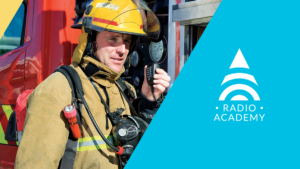Trunking is an important component in P25 and DMR Radio systems and serves to organize communications into categorized channels and priority for more organized and efficient communications.
‘How does Trunking work?’ is a lesson on Tait Radio Academy as a part of the ‘Introduction to DMR’ instructed by Noel Farrelly. Noel has 15 years experience as a Technical Trainer, and has in-depth knowledge of DMR standards and equipment. Noel has often utilized his knowledge to provide support and training solutions to specific customer requirements.
The best way of explaining how trunking works is an analogy. You walk into a bank to make a withdrawal request. There are 3 different tellers – one for withdrawals, one for deposits, and one for business transactions. In a conventional system, you choose which teller to use based on the action you are taking. However in a trunked network, every teller is multi-talented so your request will be fulfilled allocated to the teller who is not occupied.
This is how critical communications industries such as Utilities and Public Safety utilize trunking to effectively communicate to ensure the safety of people and places.
In the event that a channel is occupied, a queuing system has been implemented where the next user on the network will occupy the channel once it is free. Once that call has concluded the channel then becomes free for use. All of this happens automatically and requires no special interaction from users on the network.
Thanks to network trunking, you do not need to have 100 channels for 100 radio users. But rather an appropriate amount of channels to properly serve your organization; as not all channels will be occupied at a given time.
Learn more about Trunking and DMR in our Introduction to DMR course on Tait Radio Academy:
 Learn more about Tait Radio Academy and other course content.
Learn more about Tait Radio Academy and other course content.
Have a question regarding courses and demonstrations? Contact us.




